Battery, Charge/Discharge, Time-Scheduled Profile, ANSYS Fluent CFD Simulation
$150.00 $75.00 Student Discount
- This product numerically simulates the Battery Charge/Discharge using ANSYS Fluent software.
- We design the 3-D model with the Design Modeler software.
- We mesh the model with ANSYS Meshing software, the element number is 55339.
- We use the MSMD (Multi-Scale Multi-Domain) Battery model to define the charge/discharge.
- We use the ECM (Equivalent Circuit Model) sub-model to determine the electrochemical computations.
- We use the Time-Scheduled Profile to define charge and discharge rates.
- The run calculation is in an unsteady state (transient).
To Order Your Project or benefit from a CFD consultation, contact our experts via email (info@mr-cfd.com), online support tab, or WhatsApp at +44 7443 197273.
There are some Free Products to check our service quality.
If you want the training video in another language instead of English, ask it via info@mr-cfd.com after you buy the product.
Description
Description
In this CFD project, we present the numerical simulation of the battery charge/discharge cycles by time-scheduled profile via ANSYS Fluent software.
A battery is a device that converts chemical energy into electric energy through chemical reactions if needed. The main zone of a battery is the active cell, where electrochemical reactions occur. The passive zones include a battery’s positive and negative tabs (terminals) for electric conductivity.
Batteries are exposed to charge and discharge during operation. During charging, the electric current is supplied by an external source. However, during discharging, the electric current is consumed by an electric load.
Generally, batteries are simulated either in a charging or discharging state. However, in this project, we aim to simulate several sequential charging and discharging processes.
In this project, we analyzed a prismatic battery. Prismatic batteries are commonly used for applications with high powers, such as energy storage systems, electric vehicles, and industrial equipment.
Methodology
First, we modeled the battery geometry using Design Modeler software. The battery construction consists of a cell zone with positive and negative tab zones.
Then, we meshed the model using ANSYS Meshing software, and 55339 elements were generated.
Finally, we simulated the battery system using the Battery model in ANSYS Fluent software.
In this project, we used the Multi-Scale Multi-Domain (MSMD) model for battery modeling. The MSMD is a comprehensive method for modeling lithium-ion batteries; because it involves a multi-scale and multi-physic nature.
Then, we used the ECM (Equivalent Circuit Model) sub-model to specify the electrochemical computations. The ECM model is considered a semi-empirical method for electrochemical formulation.
Since we aim to simulate several sequential charging and discharging processes, we use a time-scheduled profile.
According to our defined profile, the battery discharged by a 20 A current in the first 300 s, charged by a 1 C-rate in the next 300 s, discharged by an 80 W power in the next 300 s, charged by a 10 A current in the next 300 s and finally discharged by a 0.5 C-rate in the last 300 s.
Since the charging/discharging process in the battery system occurs over time, we run the calculation in an unsteady state (transient).
Conclusion
We intend to analyze the battery behavior during the charging and discharging processes. Therefore, we provided the plot of potential (voltage) variations based on the time. Then, we obtained cell voltage contours at different times.
The plot and contours show that the battery undergoes several charge/discharge cycles at different rates in 300-second periods. So, we conclude that our time-scheduled profile has worked correctly.
In addition, we obtained the contours of the potential and temperature at different times at the 2 C rate. The results show a decrease in voltage and an increase in temperature during discharge.
In addition, we obtained contours of temperature, current magnitude, and SOC (state of charge) for our battery in the final state.
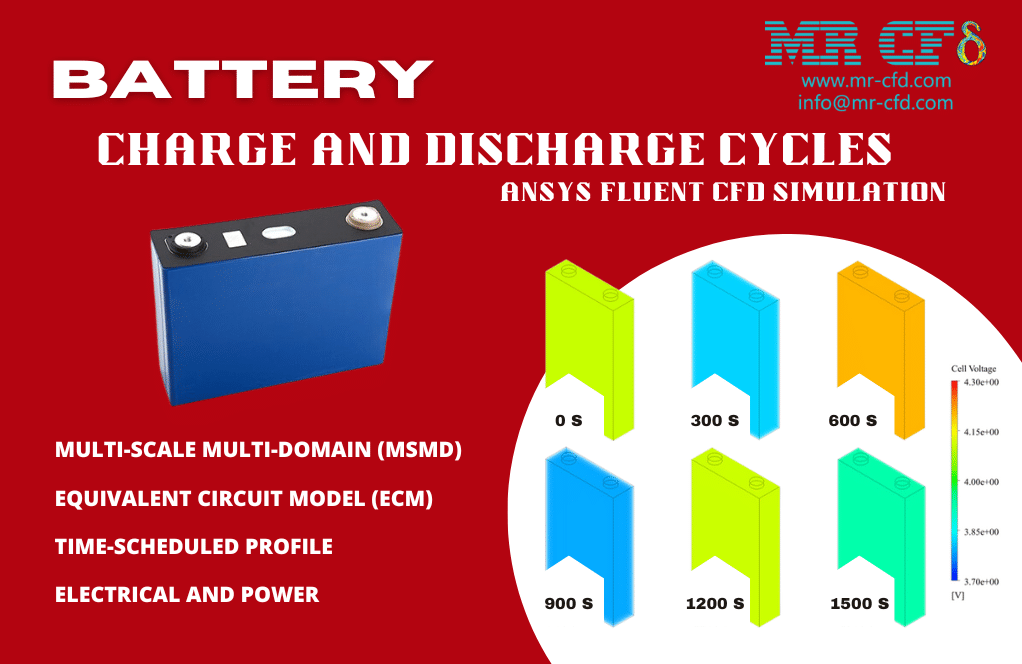

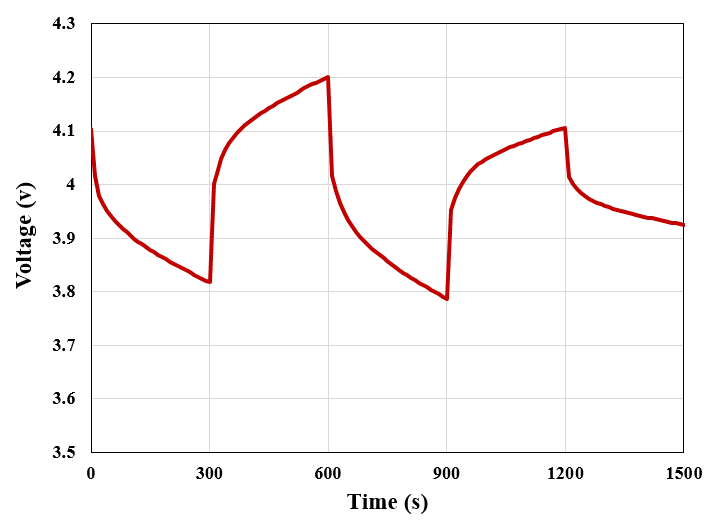

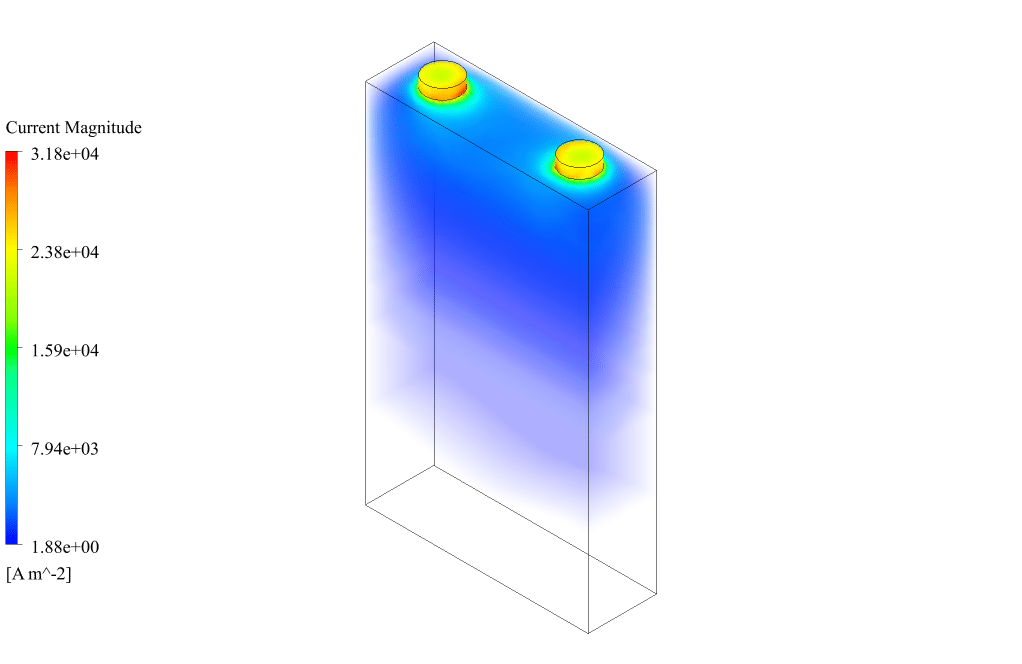
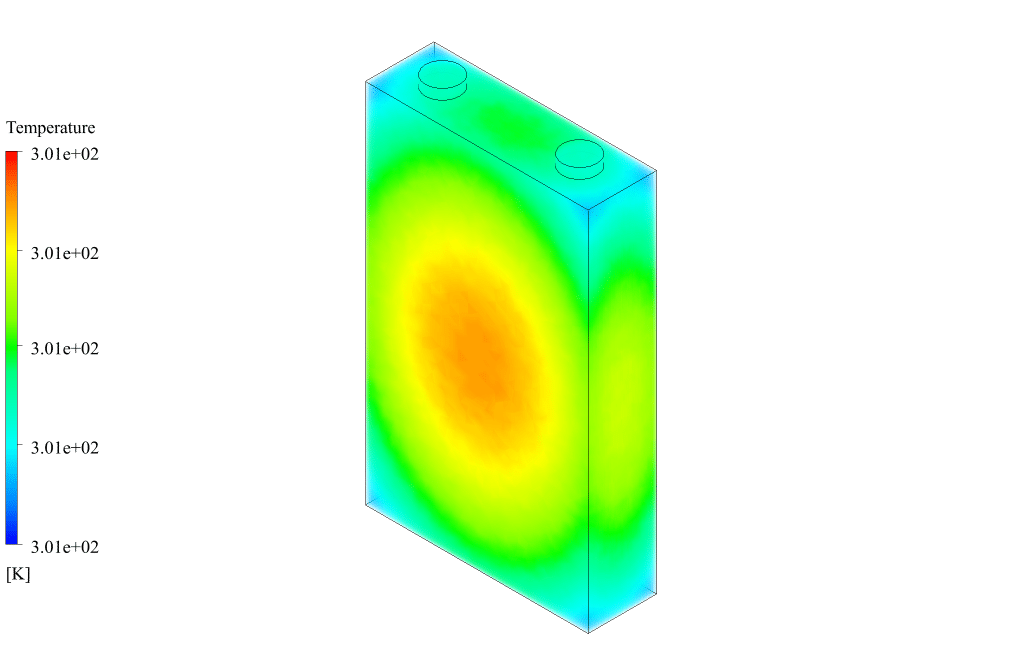
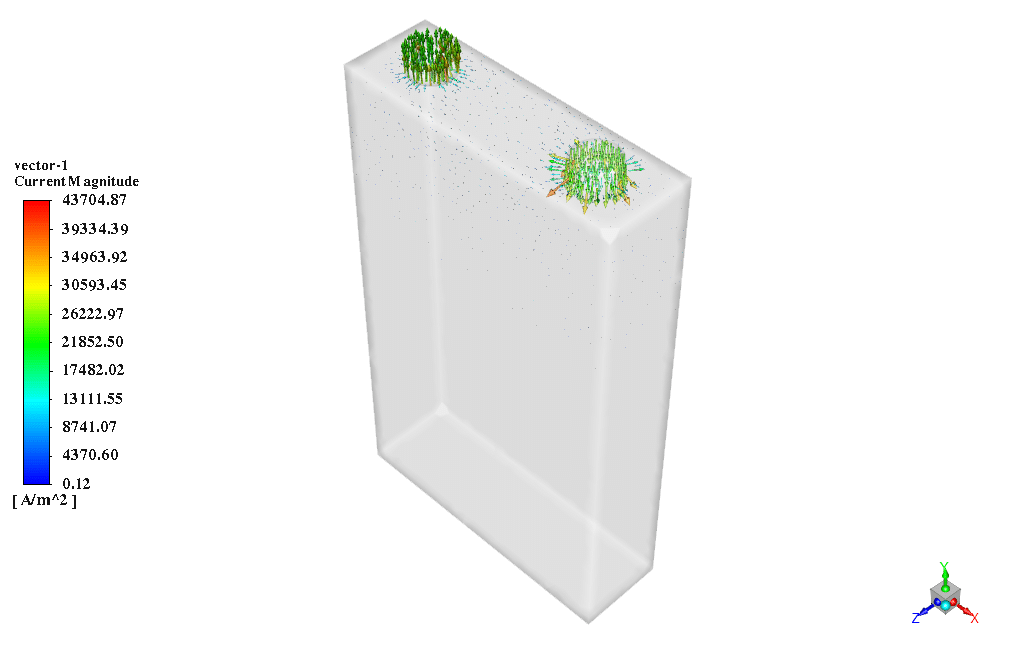
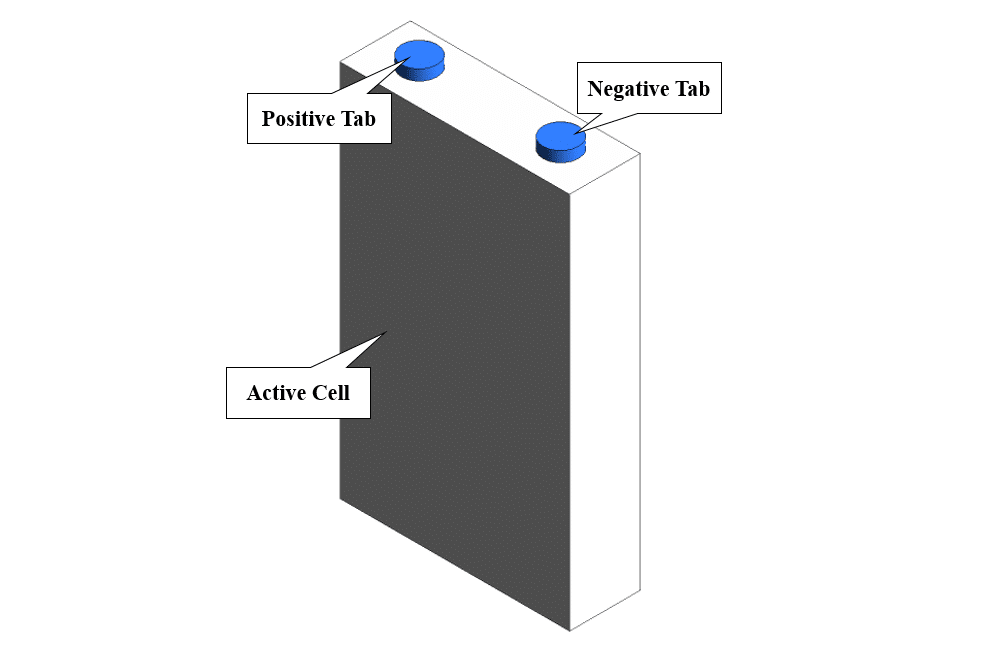
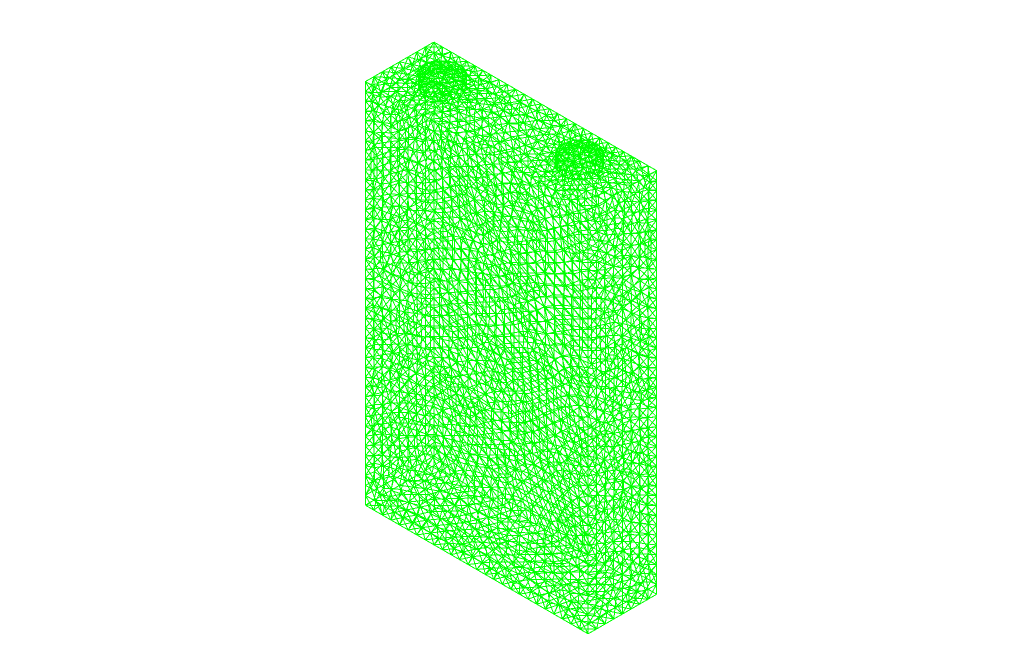

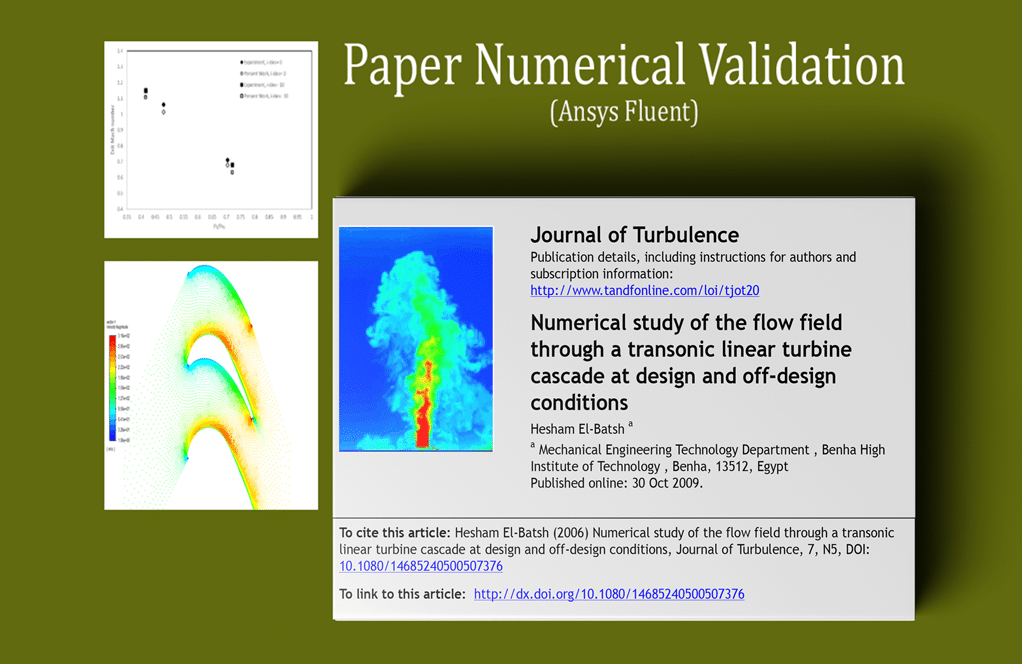


Reviews
There are no reviews yet.